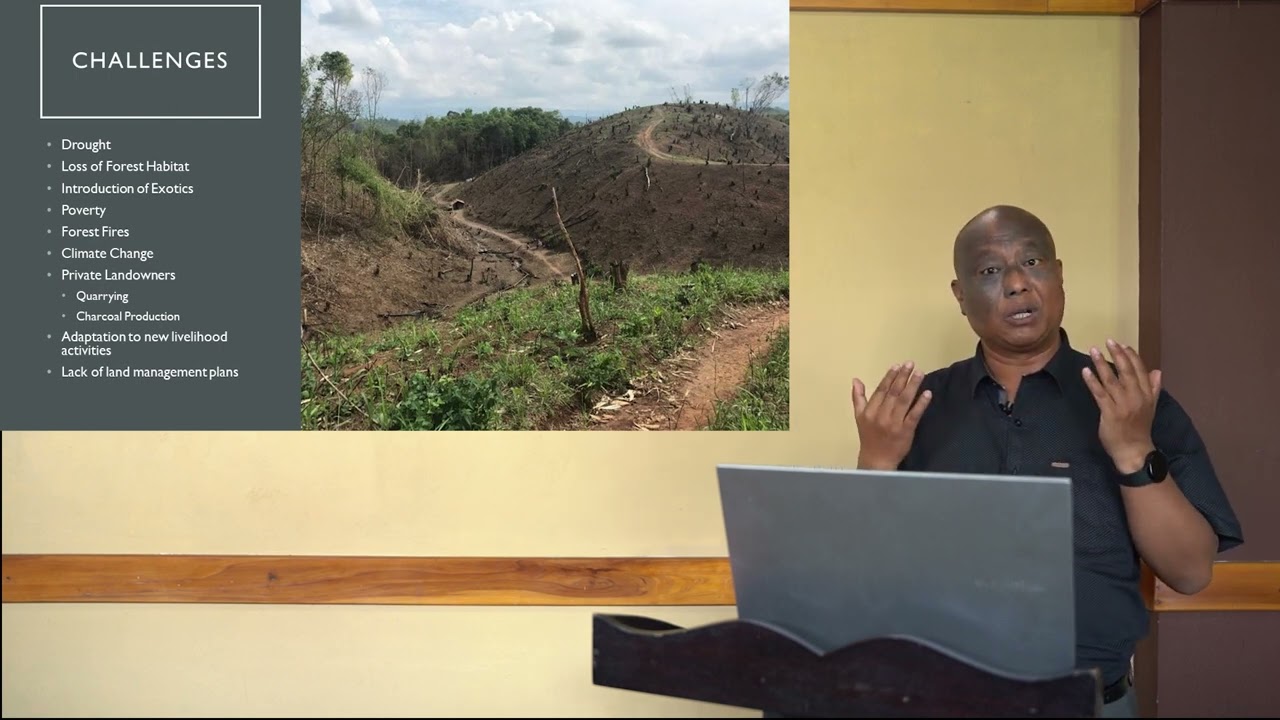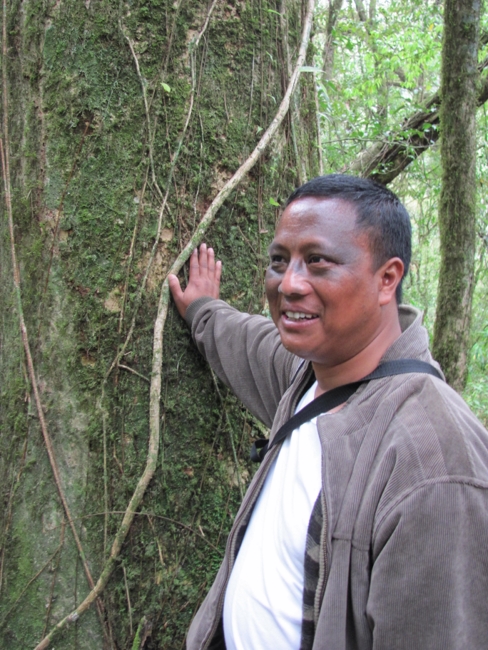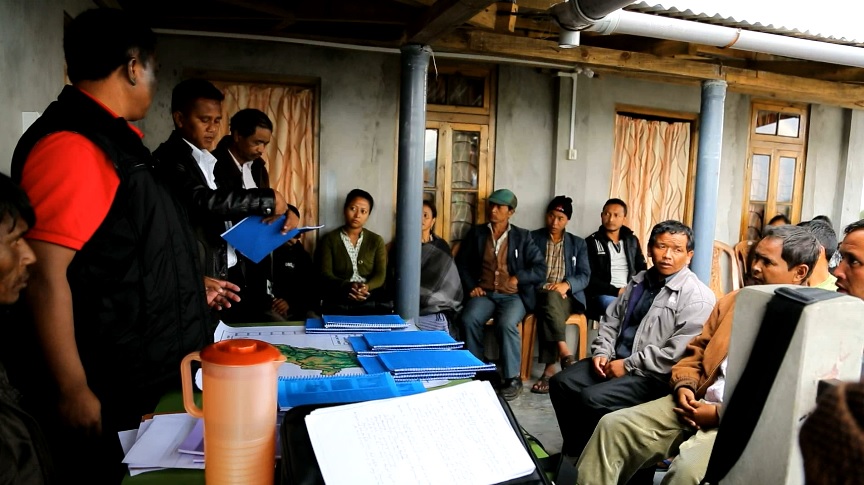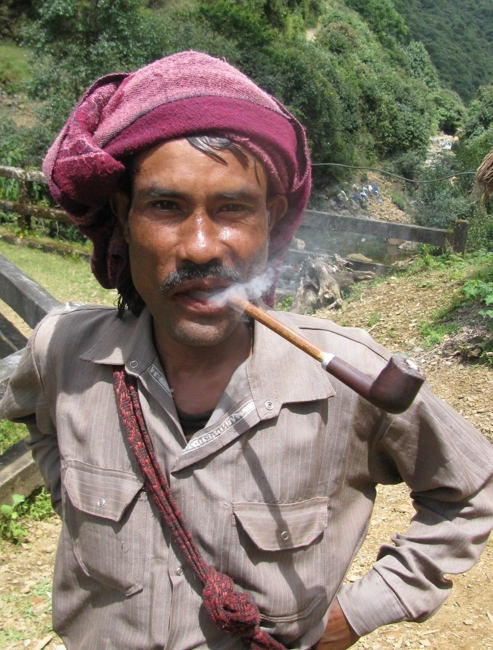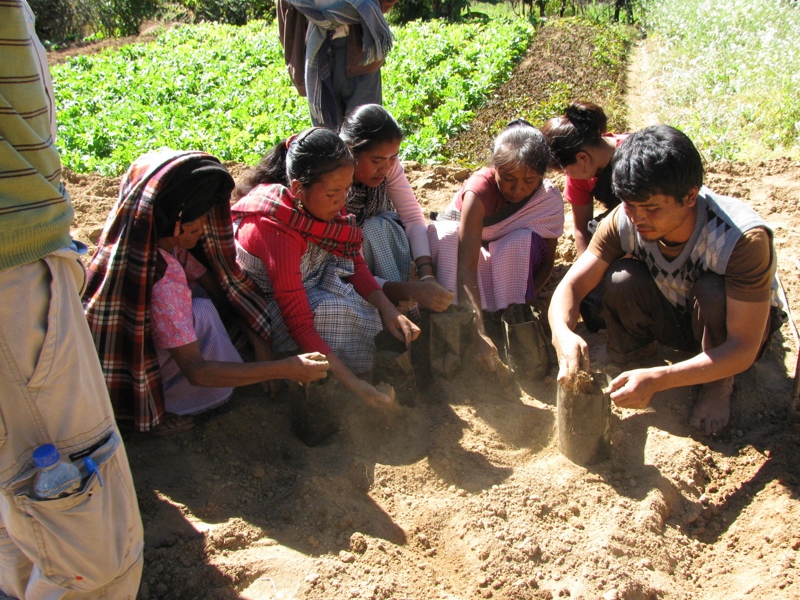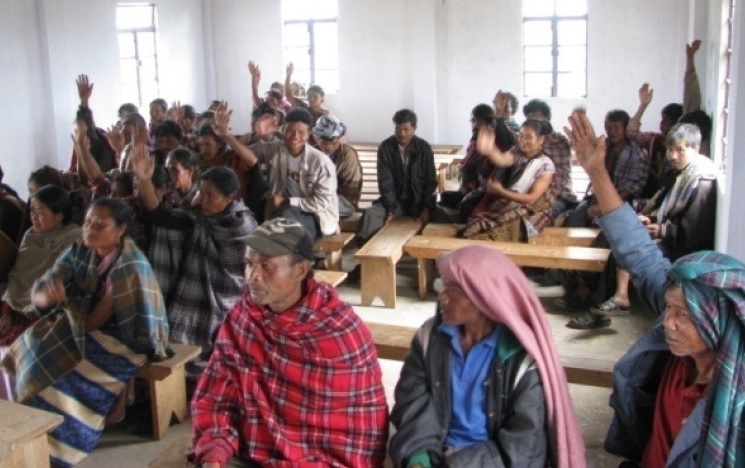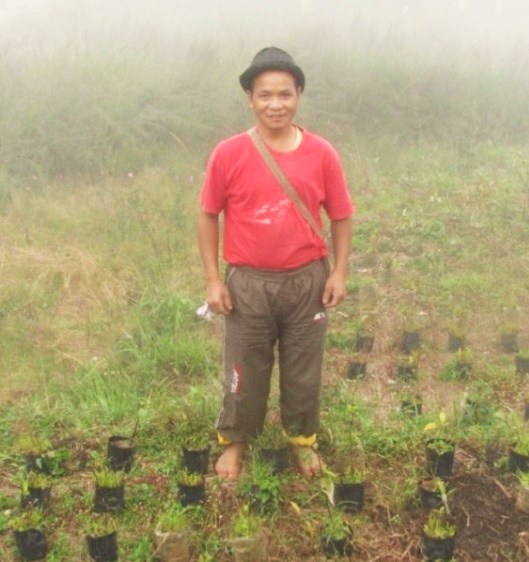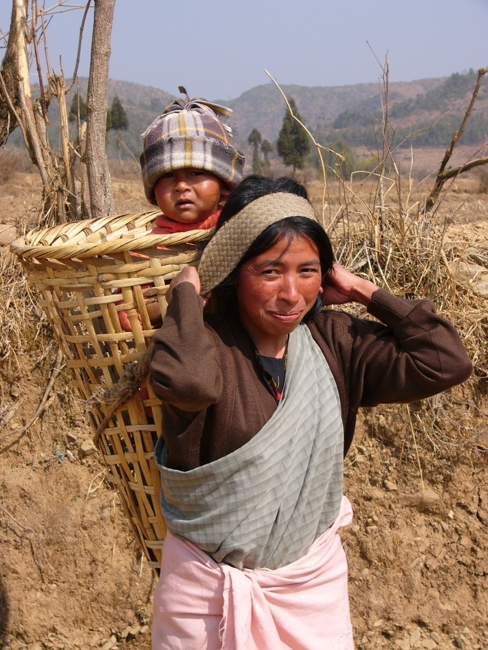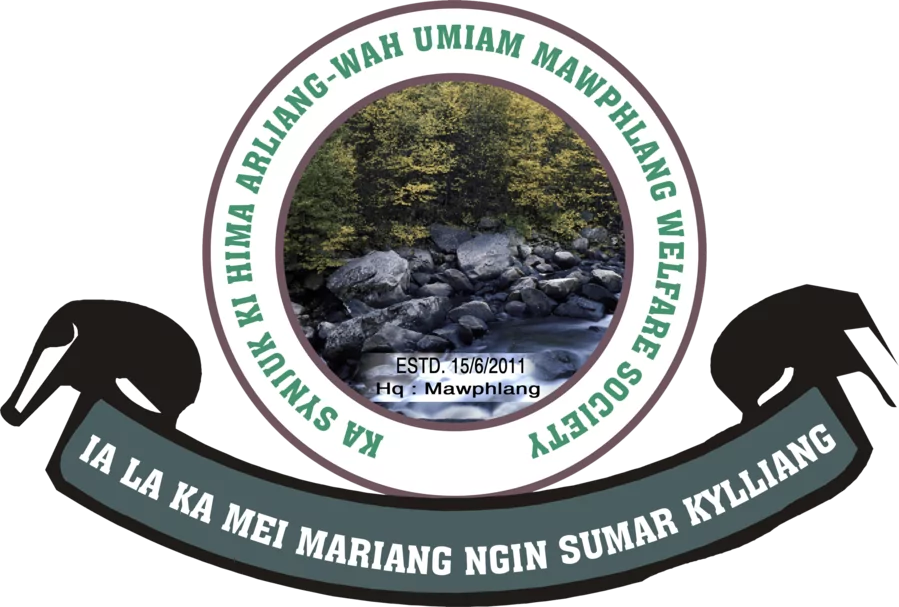Project updates and farmer profiles can be seen on COTAP’s blog and the project’s most recent annual report and COTAP’s transactions with it are in our Transparency section.
Overview
The Khasi Hills Community REDD+ Project is located in the remote northeast state of Meghalaya with Bangladesh to the south and Bhutan to the north. Spanning 23,507 hectares, it deploys strategies for both forest protection (Reducing Emissions from Deforestation and Forest Degradation, or “REDD”) and restoration (Assisted Natural Regeneration, or “ANR”). The project also provides detailed and long-term plans for improving the livelihoods of 4,400 households, 80 to 90% of which live below the poverty line. The region experienced a rapid 28% loss in forest cover between 2000 and 2005. Further, India ranks 136th of 186 countries in the UNDP’s 2012 Human Development Index, and annual incomes in the region are $490 for a family of 5 to 6.
Initial Impacts and Future Potential
In 2013, the project made its first $25,949 in community payments for 5,695 tonnes of carbon dioxide emissions reductions. During the project’s initial phase from 2012-2021, it is anticipated that it can reach at least 20% of the lowest income households (1,000 households) improve their incomes by 25 to 50% not only through carbon revenue sharing, but also through other income-generating activities (IGA’s) described below.
Over its 30-year lifespan, the project will generate a total of 860,104 tonnes of CO2 emissions reductions. At COTAP’s rate of $22.50/tonne, there is potential to generate many more millions of dollars for Khasi communities. Further, this project is one of the first REDD+ initiatives in Asia to be developed and managed by indigenous governments on communal lands, and it serves as a promising proof-of-concept which could be replicated among Northeast India’s 240 ethno-linguistic, tribal communities, both within Meghalaya and in neighboring states such as Manipur.
Transparency and Accountability
COTAP’s donation rate for the Khasi Hills project is USD $22.50 per tonne, of which we pass on $20.25 to our partner KSKHAW-UMWS, or the indigenous community’s Federation. Overall fund distribution projections are at right and are based on Table 3 of page 31 of the Project Design Document (PDD), downloadable at right. To verify and track COTAP’s disbursals to this project, as well as the respective, public carbon credit retirements, please see COTAP.org/Transparency.
Both Reducing Deforestation and Restoring Degraded Forests
The project provides proven strategies and funding for addressing the area’s root causes of deforestation. To reduce the number and severity of forest fires, firelines are being established, maintained, and monitored during the fire season. To reduce fuelwood collection, fast-growing plantations are being established near villages and will eventually meet up to 40% of fuelwood demand.
The project will provide training on the manufacture and installation of efficient cookstoves, with plans to distribute these to at least 80% of households in the first ten years. Though they can reduce fuelwood consumption by 30 to 50% while also improving health by eliminating indoor smoke, the project conservatively estimates a 15% reduction in years 1-5 and 25% in years 5-10. Further, government-subsidized solar cookers are being encouraged, and Federation representatives are seeking alternative income-generation activities to replace illegal charcoal-making in the two villages where it has been an issue.
In addition to the project’s fire and fuelwood strategies, communities are being encouraged to phase out uncontrolled cattle and goat grazing in favor of more productive and lower impact kroiler chickens, stall-fed pigs, and freshwater aquaculture ponds. The Federation is working with state agencies and mining owners to minimize quarrying and mining by negotiating site closures, building community awareness and sensitization, and providing training for alternative employment.
5,947 hectares or 22% of the project area are classified as “open forest” and will be targeted for Assisted Natural Regeneration (ANR) activities. ANR requires 10 person days per hectare for thinning, multiple coppice shoot cutting, and weeding undesirable species. ANR is extremely efficient, costing only 1 to 3% of plantation costs and results in accelerated forest regeneration with natural species and high survival rates. The project supports the treatment of 300 to 500 hectares annually over its first ten years.
Watershed and Biodiversity Benefits
In addition to generating CO2 emissions reductions which address the global problem of climate change, the project also brings a range of positive local benefits. It will improve soil quality, reduce erosion, and enhance moisture retention, making the area more resilient to fire, drought, and flooding. The project will protect, extend, and link subtropical alpine and evergreen cloud forest cover which is home to a unique mosaic of plants, including over 400 species of primitive angiosperms, orchids and fern. In addition, the project is establishing wildlife corridors for many rare and/or endangered fauna, including the binturong, pangolin, Chinese ferret-badger, leopard cat, flying fox, and serow.
Income Generating Activities (IGA’s) and Self Help Groups (SHG’s)
There are numerous income-generating activities (IGA’s) beyond distributing carbon revenues to the 62 communities for meeting benchmarks under their forest management plans, or Plan Vivos. One such IGA is the Animal Exchange Program, wherein the project provides support for the construction of stalls and pens to reduce grazing and improve villager livestock income from more intensive stall feeding. In addition, to promote saving and setting up small enterprises among the villages, the project will train and capitalize women to lead village banking groups, referred to as Self Help Groups (SHG’s).
About Our Partners
The Ka Synjuk Ki Hima Arliang Wah Umiam Mawphlang Welfare Society (KSKHAW-UMWS), also referred to as the Federation, is a non-profit organization representing 10 indigenous Khasi governments and their 62 villages. In August 2011, the Federation registered in the state of Meghalaya to serve as a unified legal entity for coordinating project management and engaging with project support partners, the Government of India, and organizations like COTAP.
Community Forestry International (CFI) is a U.S.-based non-profit which creates legal, institutional, technical, and financial strategies for forest communities in Asia at the village, national, and global levels. CFI has been working in northeast India since 2003. CFI organized successful REDD+ and livelihood pilots for the Khasi Hills project between 2005 and 2009, and was actively involved in the project’s design and registration under the Plan Vivo standard. CFI continues to advise and assist the project with capacity building, training, implementation, technical forestry expertise, monitoring, bookkeeping, and oversight of the administration of REDD+ project funds.


